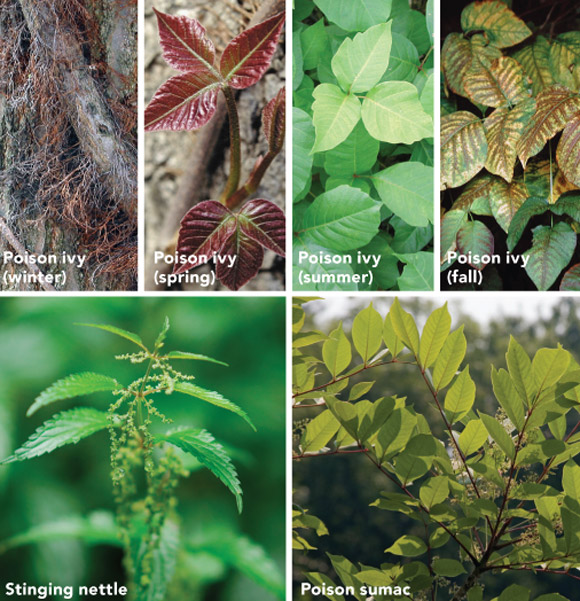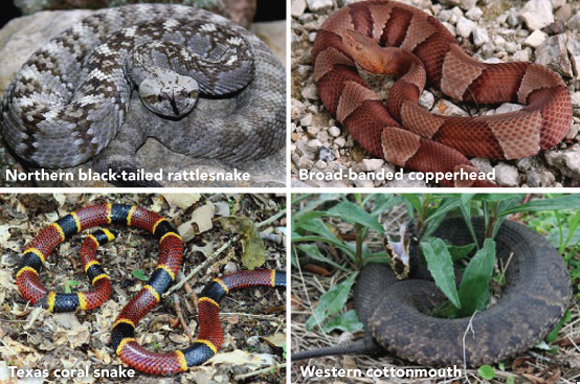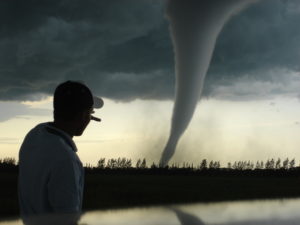Tips for Outdoor Workers in the Spring

Spring is here and that means it’s important to be aware of the safety hazards that can affect your employees during this time. Many occupations require employees to be outdoors for at least part of the time. OSHA requires that employees be trained to recognize and avoid all workplace hazards, including those that can occur outside.
Here are some hazards to watch out for this spring and prevention tips to avoid them!
Poisonous plants
Poison ivy, poison oak, poison sumac, stinging nettle and poison hemlock are among the plants that can cause skin irritation lasting a week or more,
according to the U.S. Forest Service. Irritation can be caused by brushing against a plant or from secondary contact with contaminated clothing.
Tip to avoid Poisonous Plants
Wear protective clothing. “Workers should wear long-sleeved shirts, pants, hats and gloves when performing outdoor work near toxic plants,” said Jim Miller, emeritus research ecologist of invasive plants for USFS. In addition, Miller recommends wearing eye and face protection, such as a facemask or goggles, as irritation can occur if workers are exposed to dust and pollen from certain plants.
Venomous snakes
Rattlesnakes, copperheads, coral snakes and cottonmouths (also known as water moccasins) are venomous snake species found throughout the United States, according to the Centers for Disease Control and Prevention. Venomous snakes can live near rocky areas, forests, swamps and bodies of water, as well as woody or sandy marsh areas in the  southern parts of the country. Rattlesnakes can be found near logs, boulders and mountains, prairies, and beaches. Anyone performing outdoor work in these environments should receive training on hazards involving snakes.
southern parts of the country. Rattlesnakes can be found near logs, boulders and mountains, prairies, and beaches. Anyone performing outdoor work in these environments should receive training on hazards involving snakes.
Tip to avoid Venomous Snakes:
Learn to identify. In the event of a snake bite, medical professionals need to identify the species of the snake. “If you can at least be able to identify it, then you’re at a point that you can select an antitoxin,” Wozniak said. Instruct workers to use their cell phone’s camera function to take pictures of snakes, he said.
Stinging insects
Bees, wasps and other stinging insects are found throughout the United States. These insects will sting if they are disturbed as they go about their activities, especially while foraging for food, according to the University of California, Davis. Exposure to a stinging insect can cause a severe allergic reaction.
Tip to avoid Stinging Insects
Be aware. “If you’re going to be in an area where there are bees or wasps or hornets, [it is important] to constantly keep your eyes open,” Wozniak said, adding that workers should watch for a pattern of movement – for example, if they see multiple bees or wasps going to or from a specific area. “If you start seeing some of these things, that’s probably an indication that a wasp or a bee [colony] is going to be there,” he said.
Lyme Disease
One serious risk of outdoor work is Lyme disease, which is spread when individuals are bitten by infected ticks. According to the Centers for Disease Control and Prevention, May, June and July are the most active months for ticks that transmit Lyme disease. The agency offers the following precautions to protect against tick bites.
Tip to prevent Lyme Disease
Protect your skin. When working in areas where ticks may be present, it is important to take measures to keep the insects away from your skin. Wear long pants, shirts and socks to cover as much skin as possible. Tucking your pant legs into your boots can help ensure ticks stay outside of your clothing. If you are going to be working outside for an extended period of time, consider taping the area where your pants and socks meet to further prevent the insects from crawling under your clothing.
CDC also recommends workers consider treating work clothes with Permethrin, a repellent that can be applied to clothing to kill ticks. However, never use Permethrin directly on your skin. Treat any exposed skin with insect repellent containing 20-30 percent DEET.
Tornadoes and severe storms
Tornadoes, earthquakes and hurricanes. These are just some of the destructive ways natural disasters can wreak havoc on your employees.
Tip to handle tornados and severe storms.
If severe weather, such as a tornado, is a threat, Ready.gov advises sounding a distinct warning and moving workers to the strongest part of the building or structure. Conduct a drill when all employees are present to make sure the building’s safe areas provide enough room for everyone.
- Warning employees to move away from all windows and gather near the center of the building
- Directing workers to move to the second floor or higher, and avoid the basement
- Closing all doors and windows
- Instructing employees to stay sheltered until public officials say the area is safe
- Have an emergency kit prepared with at least 72 hours of food and water supplies. In addition, stay up to date on drills for disasters common to your area.
Additional Spring Safety Tips:
- Wear safety goggles, sturdy shoes, and long pants when using lawn mowers and other machinery.
- Use insect repellant containing DEET.
- Follow instructions and warning labels on chemical and lawn and garden equipment. (As a reminder, if workers will be using consumer chemical products in amounts and/or frequencies that exceed typical consumer use, employers must obtain a safety data sheet (SDS) for the product, ensure that it is properly labeled, and train workers in its hazards and safe work practices.)
- Reduce the risk of sunburn and skin cancer by wearing long sleeves, a wide-brimmed hat, and sunshades. Use sunscreen with an SPF of 15 or higher.
- Keep an eye on the thermometer and take precautions in the heat.
